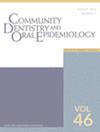Development and Content Validity of the International Association for Disability and Oral Health Universal Case Mix Tool: A Consensus Study
Abstract
Objectives
To develop the International Association for Disability and Oral Health Universal Case Mix Tool (iADH UCMT) that rates case complexity in the delivery of oral healthcare.
Methods
A modified e-Delphi survey sought consensus on the content of a universal Case Mix Tool to rate the degree of adaptation over and above that required for the general population, with respect to time, resources and/or expertise necessary to provide high-quality care and equitable outcomes. The survey consisted of candidate domains, ratings and descriptors, following a scoping review of the literature. The consensus threshold was set a priori at ≥ 75% agreement. Expert agreement was sought on both content and wording, and free text comments were subsequently used to refine the exact wording of each domain and descriptor. A consensus meeting followed to rate descriptors for cultural acceptability and clarity, using 5-point Likert scales. Terms were aligned linguistically to ensure consistency across domains, scores and descriptors, and a glossary of definitions was refined.
Results
From the 70 registrants, 40 completed the survey (participation rate 59.7%). Respondents demonstrated a high level of agreement regarding the appropriateness of the seven domains, with agreement ranging from 90% to 100%. Consensus for rating descriptors was also high (85%–95%). Twenty-seven panellists and five development team members attended the consensus meeting, where cultural acceptability (means ranged from 4.6 to 4.8) and clarity (means ranged from 4.2 to 4.7) were demonstrated across domains. This consensus process produced an iADH Universal Case Mix Tool consisting of seven domains: Communication; Dental behaviour support; Medical status; Risk factors for oral disease and dysfunction; Autonomy; Legal and ethical barriers; and, Access to adapted care at the services, systems and policies level. Each Domain has four possible ratings to reflect the degree of adaptation required with respect to time, resources and/or expertise necessary to provide high-quality care and equitable outcomes. The domains, ratings and descriptors were found to be appropriate, clear and culturally acceptable.
Conclusions
An international panel developed a Universal Case Mix Tool to rate complexity in the delivery of oral health care. Acceptable content validity was confirmed, and further psychometric testing is planned.


 求助内容:
求助内容: 应助结果提醒方式:
应助结果提醒方式:


